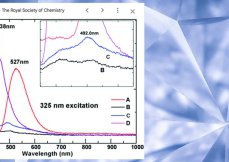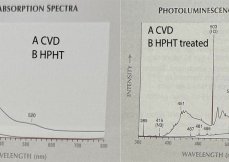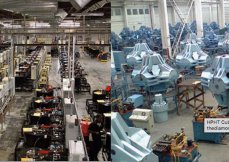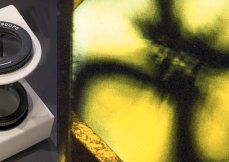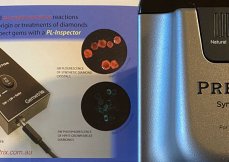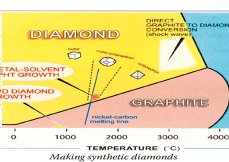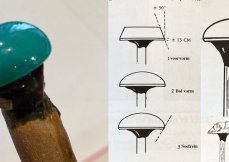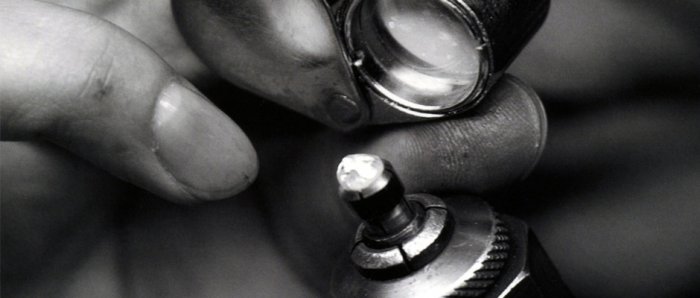
THE SITUATION OF THE DIAMOND SECTOR | EN
The third edition of Bain & Company’s annual report, published under the sponsorship of the AWDC, gives an overview of the situation of the diamond market over these last 5 years, as well as the estimates for the next decade. "The retail sales of diamond jewellery items have still been increasing throughout 2012 in spite of the economic difficulties."
TOWARDS AN AUTOMATED SORTING OUT OF THE STONES
As regards the sorting out intended to separate the quality gem type diamonds from the industrial diamonds and to assess the value of those two categories, the gem quality type diamonds are sorted out by weight, shape, clarity and colour. Such criteria, there are 12,000 of them, enable the producers to classify and assess the diamonds. The diamonds produced are then packed for sale. The recent technological progress has considerably improved the efficiency and the precision of the sorting out. Technology IS improving so fast that it might soon be possible to completely automate the assessment of diamonds. Once the values have been solved, the producers are selling through three distribution channels the long-term contracts, the auction sales and the short-term contracts. The most widely used sale channel is the long-term contract, which represents almost 65% of the rough diamond sales. Most big producers prefer such long-term contracts since they provide for price stability and enable the producers to check the demands for volume previously and a choice of stones they are expected to produce. Auctions represent around 30% of the rough diamond sales and they are the small producers' favourite sale channels. The big producers use auction sales to test the market prices and sell exceptional stones; only 10 to 20% of their sales are concluded through this channel The short-term contracts are mainly used to sell left overs or such stones that do not fall within the typical cut range Most big producers sell less than 1% of their productions through this channel, except for Alrosa which is selling almost 20% of Its production through short-term agreements. Obviously the producers are not expected to alter their sales method for rough diamonds. The big businesses have stabilised their models and have not announced any plans to change them. The small producers have hardly any opportunity to move to the long-term contracts owing to the significant infrastructure investments that the model requires As regards rough diamonds, the issue which crops up is to know whether Dubai is going to catch up with Antwerp The Belgian city remains the most important distribution centre for rough diamonds With a sales turnover of dollars 50 to 55 billion, followed by Dubai with 40 to 45 billion, New York with 35 to 40 billion, Hong Kong with 30 to 35 billion) Mumbai with 25 to 30 billion and Tel Aviv with dollars 22 to 27 billion.
SALES INCREASING
In terms of jewellery, the diamond jewellery market generally follows the global trends In luxury products, and the luxury products global market has known a constant growth of around 12% a year over the last three years. The retail diamond jewellery sales have been growing in 2012 in spite of the economic uncertainties China and India, the diamond market growth drivers over the last few years, are still growing, but the rhythm of growth has slowed down by 2 to 3%. The sales growth in the Gulf countries was 2% in 2012, it used to be 6% per year between 2006 and 2012. The sales in Japan increased by 2% in 2012, a net drop as compared to an annual growth of 26% recorded between 2009 and 2012. The European Union carried on decreasing, with, in 2012, an income from the retail sale of diamond jewellery which fell by 4% starting in 2011. This drop was somewhat compensated by the rich Asian tourists and those from the Middle East who came to do their shopping in Europe. The increase of this market in the United States, finally, remained in line with the global economic expansion. Synthetic diamonds were, once more, in the headlines in 2012, with several reports on synthetic stones sold as natural ones and found out when they went through specialised labs. The incident, which was most famous in the news, occurred in May when the IGI received one thousand stones to analyse. It appeared that 600 of these stones were in fact synthetic ones and that in some, according to a source from the industry, impurities are said to have been introduced so that they look natural during the first inspection The De Beers Diamond Trading Company Research Centre has also flagged down some cases of presentations, not revealed, of synthetic diamonds to classifying labs in China and India. To reply to such issues and other "pollution" attempts of natural diamond lots, such producers like De Beers and the independent labs like AG & L the HRD and the IGI are developing new quick testing equipment’s. De Beers has recently announced that it had developed a detector for synthetic additions, which may automatically check big volumes of small diamonds (small brilliants and additions) to detect the authenticity. After using the device on thousands of diamond lots, De Beers is convinced that the material is efficient in detecting synthetic diamonds in the lots and that its use will strengthen the industry's capacity to detect synthetic diamonds.
|

